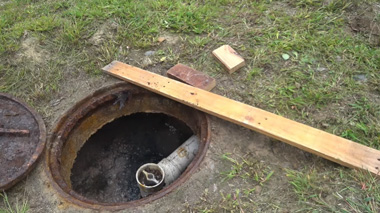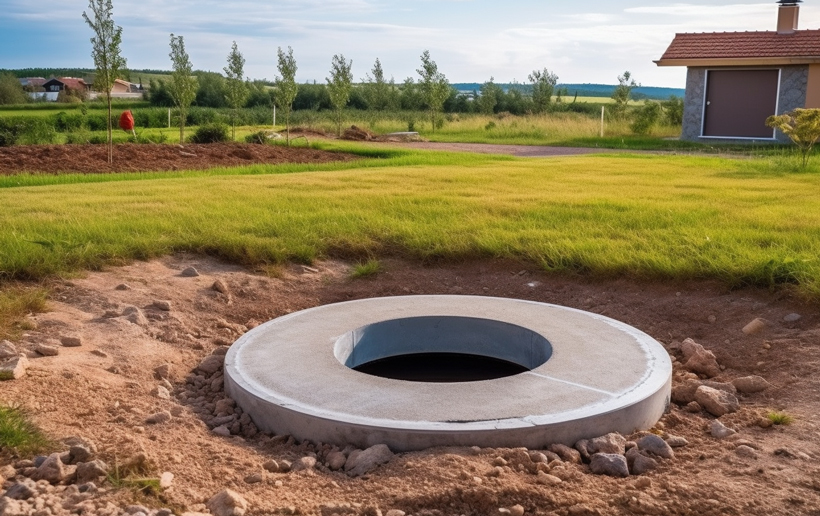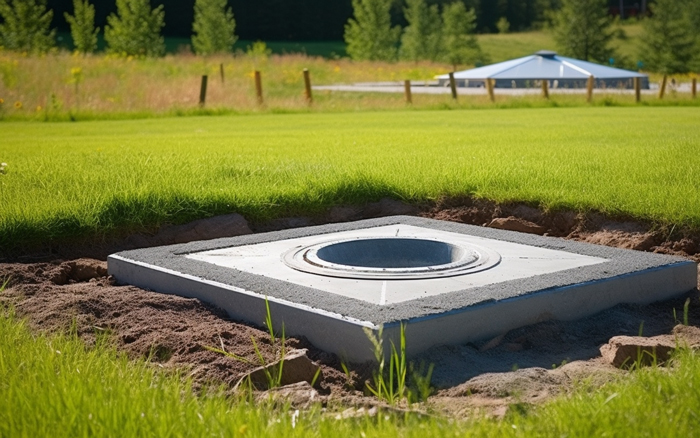Septic tanks are an environmentally friendly, durable, and cost-efficient way of disposing of liquid waste from your house. However, the tank requires regular maintenance and occasional cleaning to remain effective. So, how do you maintain and clean septic tanks?
Maintaining the septic tank involves regularly inspecting it and cleaning its filters. Also, practicing safe use, like avoiding detergents with harsh chemicals, is part of maintenance. Cleaning involves pumping waste and cleaning the tank, often done by professionals.
Discover effective ways to maintain and clean your septic tank in this informative article. Keep reading to gain valuable insights.
How to Maintain a Septic Tank?
A septic tank works by separating the heavy solids waste and lighter floatable solids from the water. The heavier solids, sludge, float to the bottom where microbes, naturally present in the tank, eat and degrade them.

The lighter solids, scum, which includes oils and fats, float to the top, where microbes break them down. And the wastewater in the middle is drained into the next section of the tank and then out to the leach fields.
Maintaining the septic tanks aims to ensure this process continues smoothly and prevents problems like blockage and overflow. Some of the ways of maintaining a septic tank include;
1. Use Enzyme-Producing Products
One of the easiest ways of maintaining the septic tank is by using microbial products that have bacteria, which can produce enzymes needed to degrade matter inside the septic tank.
The increased number of healthy bacteria ensures the tank functions effectively and both scum and sludge degrade faster.
2. Cleaning the filter
Most residential home septic tanks have a filter at the outlet T pipe. The filter ensures sludge and scum don’t get to the leach fields causing blockages in the system.
Cleaning the filter ensures it can effectively filter solids and only allow wastewater through. And it can be done at home and only requires pressured water to clean.
3. Inspecting the Tank
Occasionally inspect the tank to observe the scum levels and amount of sludge. Inspection is necessary as it helps you notice the scum or sludge levels that may require you to pump the septic tank and avoid clogging,
How regularly you inspect the septic tank is determined by various things including;
- Size of the household – Larger households may require regular inspection than smaller ones
- Solids in the wastewater – Inspections should be frequent if the wastewater contains too much solid waste
- Size of the tank – Owners with smaller septic tanks must inspect them more often
4. Practice Safe Usage

Various things can increase the risk of septic tank blocking or overflowing. They include;
a) Chemical Cleaners
Heavy use of chemical cleaners reduces the number of microbes in the tank causing sludge to break slowly. And with time, the septic tank gets clogged resulting in overflow and sometimes backflow into the house. The backflow brings in a foul odor that homeowners cannot tolerate.
Learn about the chemicals that should not be flushed into the tank and avoid using them altogether. Some of them include dishwasher detergents, drain cleaners, and degreasing chemicals.
b) Non-Biodegradable Items
Another way of maintaining the septic tank by practicing safe usage is by avoiding flushing non-biodegradable items. These are items that won’t go through the system.
Flushable wipes are among the common culprits, and despite being flushable, they shouldn’t be flushed into the septic tanks but into the city sewer. Some items to never flush due to a risk of clogging include dental floss, cigarette butts, and paper towels.
c) Excessive Use of Water
Limiting the amount of water you use at ago is also another way of maintaining the septic tank. Too much water can result in flooding, as the solid doesn’t have time to degrade, clogging the system.
Owners can spread the laundry over the week, allowing the scum and sludge to degrade and wastewater to get through to the fields.
How to Clean Septic Tanks?
Cleaning the septic tank should be done every three to five years but is mostly determined by the sludge level inside. The cleaning job usually involves a lot and requires professionals. But you can do the job yourself if you have the tools needed.

However, some jurisdictions may require a proper license before you pump the septic tank. Follow the steps below to clean your septic tank.
- Step 1. Digging – If the septic tank entrance is underground, dig to access it.
- Step 2. Raking – Use a rake to break and remove a solid scum if it’s too thick to vacuum.
- Step 3. Vacuuming – Using a high-pressure vacuum, mostly a vacuum truck, vacuum wastewater and sludge from the tank.
- Step 4. Rinse – Rinse the septic tank with high-pressure clean water after all waste has been vacuumed from both sections.
- Step 5. Test – Flush water from the bathroom to ensure the system works effectively and the water moves as it should.
- Step 6. Close the Tank – Close the lid to the septic tank and place a metal object on top. It’ll be easier to know where the entrance is using a metal detector, saving you time.
FAQs
The following are the frequently asked questions related to this topic and their answers.
Various factors, like the size of the household and safe usage practices, should determine how often you clean a septic tank filter. However, most professionals recommend cleaning after every six months.
The average cost of cleaning and pumping a septic tank ranges between $290 and $700. However, the price may increase if the system is clogged and a part in the tank requires replacement.
You can inspect the septic tank every one to three years, but it mostly depends on your usage habits. You can take more time if you observe safe usage and occasionally use products that increase healthy bacteria. However, inspections should be more regular if the tank has mechanical parts.
Final Thoughts
Septic tanks are ideal and eco-friendly for removing wastewater from your home. With regular maintenance, these tanks can see you through for decades, as they are very durable. Ensuring the microbes in the tank and system are in large numbers is one way of increasing their effectiveness.
However, after several years the tank will require cleaning, which involves pumping the wastewater out along with the sludge. You can do the cleaning and save some maintenance money if you have the proper equipment.